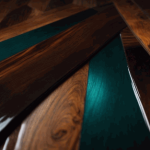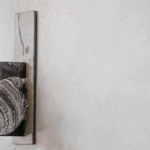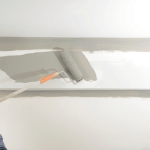Looking to give your plaster walls a fresh new look? Choosing the right type of paint is crucial for achieving a beautiful and long-lasting finish.
We will discuss the various types of paint suitable for plaster, including latex, acrylic, oil-based, chalk, milk, mineral, and lime wash paint.
Explore important factors to consider when selecting paint for plaster and find valuable tips for painting on plaster.
Discover how to transform your plaster walls with the perfect paint choice!
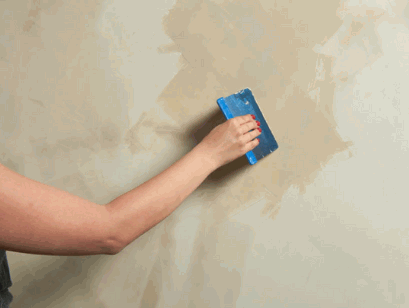
Types Of Paint Suitable For Plaster
Choosing the right type of paint for plaster is crucial to achieving a professional finish. There are various options available, including latex paint, acrylic paint, oil-based paint, chalk paint, milk paint, mineral paint, and lime wash paint.
- Latex paint, known for its durability and ease of cleaning, is suitable for smooth plaster surfaces, offering a quick drying time and low odor.
- Acrylic paint, versatile and available in various finishes, is ideal for textured plaster, providing excellent adhesion and moisture resistance.
- Oil-based paint, offering a high sheen and durability, is recommended for older or rough plaster surfaces due to its strong bonding capabilities.
- Chalk paint, popular for its matte finish and vintage look, works well on both smooth and rough plaster, adding a unique touch to the decor.
- Milk paint, an eco-friendly option with a matte finish, is best suited for porous plaster surfaces, creating a soft, aged appearance.
- Mineral paint, with its breathable formula and mineral pigments, is perfect for lime or cement-based plaster, allowing for natural movement and preventing cracks.
- Limewash paint, offering a textured, weathered appearance, is ideal for lime-based plaster, providing a breathable finish that enhances the texture of the surface.
Check out: How To Plastering A Wall
Latex Paint
Latex paint is a popular choice for painting new plaster due to its durability, quick drying time, and ease of application. It is suitable for both interior and exterior plaster walls, offering a wide range of colours and finishes.
In terms of preparing new plaster walls for painting with latex paint, the process is crucial in achieving a smooth and lasting finish. Begin by ensuring the plaster is fully dry and free of any dust or debris, sanding any rough areas, and filling in any imperfections with a suitable filler.
After the surface is prepped, it’s time to apply the latex paint. Utilise high-quality brushes or rollers for a consistent application, starting from the top and working downwards to avoid drips. Remember to apply multiple thin coats rather than one thick layer for a professional result.
Once the walls are beautifully coated, proper post-painting care is essential. Avoid washing the walls for at least a month to allow the paint to fully cure, and choose the right emulsion and topcoat for added protection and longevity. This attention to detail ensures your newly painted plaster walls remain vibrant and pristine for years to come.

Acrylic Paint
Acrylic paint is known for its quick drying process and versatility, making it a suitable choice for painting new plaster. It adheres well to primed surfaces, providing a smooth finish with minimal effort.
When using acrylic paint on plaster, the use of primers plays a crucial role in ensuring proper adhesion and long-lasting results. Primers help create a stable surface for the paint to adhere to, reducing the risk of peeling or flaking over time. It’s essential to apply the primer evenly and allow it to dry thoroughly before proceeding with the paint application. Proper coat application techniques, such as brush strokes or roller application, can impact the final finish texture and appearance.
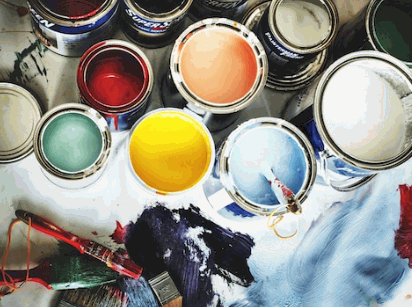
Oil-Based Paint
Oil-based paint is a durable option for painting new plaster, offering a smooth finish and excellent coverage. Applying a mist coat beforehand can enhance adhesion and ensure an even application on the surface.
One of the key advantages of using oil-based paint on fresh plaster is its ability to provide a strong protective layer that can withstand wear and tear over time. The high-quality pigments in oil-based paints create a rich, lustrous finish that adds depth to the walls.
In terms of applying a mist coat, this diluted layer of paint penetrates the plaster surface, sealing it and providing a solid foundation for the subsequent coats. This step is crucial in preventing patchiness and promoting good adhesion between the paint and the surface.
To achieve a flawless finish, it is essential to prepare the surface properly by filling any imperfections and sanding the plaster smoothly. Applying a coat of PVA primer before the mist coat can further improve adhesion and create a uniform surface for painting.
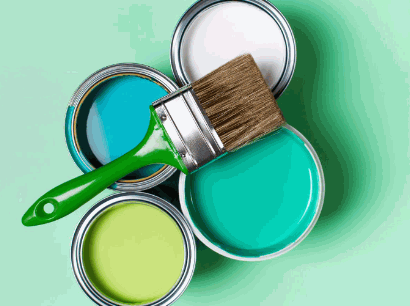
Chalk Paint
Chalk paint is a versatile option for painting new plastered walls, offering a matt finish and a wide range of neutral shades. Its unique properties make it ideal for achieving a flawless paint job with a classic look.
One of the standout characteristics of chalk paint is its porous nature, allowing it to adhere seamlessly to fresh plaster and create a durable surface. Along with its ability to cover imperfections, chalk paint is known for its ease of application and quick drying time, making it a popular choice among DIY enthusiasts.
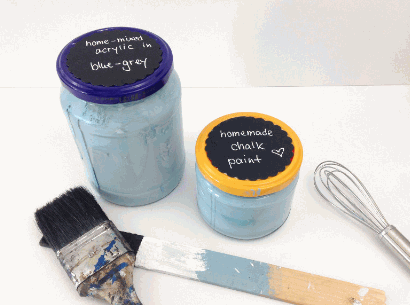
Milk Paint
Milk paint is a natural and eco-friendly option for painting new plaster, known for its unique finish and texture. It provides a vintage look and is suitable for achieving the best paint finish.
Due to its organic composition, milk paint is a safe alternative to traditional paints, making it ideal for those concerned about environmental impact. One of the significant advantages of using milk paint on new plaster surfaces is its breathability, allowing the walls to regulate moisture and prevent issues such as mould growth. To prevent patchy finishes and peeling paint, it is crucial to properly prepare the surface by cleaning and priming it before application.
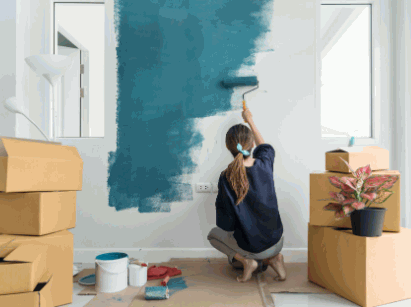
Mineral Paint
Mineral paint is a high-quality option for painting new plaster, offering a satin finish and ensuring an even application. When combined with the best primer and a topcoat, it provides a smooth finish that enhances the overall appearance.
Mineral paint is favoured for its durability and breathability, making it ideal for surfaces like new plaster that require special attention. Its satin finish adds a touch of elegance to the wall, giving a subtle sheen that reflects light beautifully. The application benefits of mineral paint include easy blending and excellent coverage, saving time and effort during the painting process.
To achieve the best results, using the best primer is crucial as it prepares the surface for the topcoat, ensuring adhesion and uniform colour. When applying the topcoat, remember to work methodically in small sections, maintaining a wet edge to avoid visible brush strokes or roller marks.
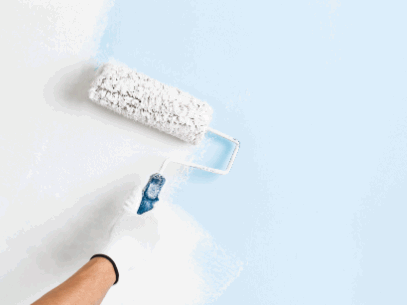
Lime Wash Paint
Limewash paint is a traditional option for painting both new and old plaster walls, offering a breathable and textured finish.
To maintain the integrity of the lime wash paint and ensure a lasting finish, properly preparing the surface is crucial. Start by thoroughly inspecting the walls for any cracks or imperfections that need attention. Use a reliable filler to repair these areas, creating a smooth base for the paint application. Next, remove any existing paint or residue that could hinder adhesion, allowing the lime wash to bond securely to the plaster surface. Applying a high-quality primer before painting not only enhances adhesion but also improves the durability and longevity of the finish.
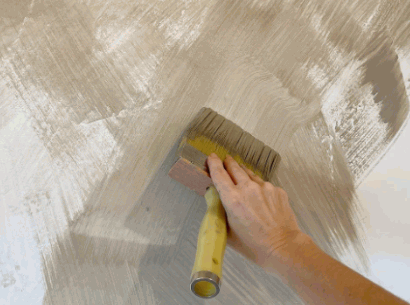
Factors To Consider When Choosing Paint For Plaster
When selecting paint for plaster, several factors need to be considered to ensure a successful outcome. Understanding the type of plaster, proper surface preparation, and the desired finish are key elements in choosing the right paint.
The type of plaster used plays a crucial role in deciding the appropriate paint. Matching the paint type to the specific plaster material ensures compatibility and longevity of the paint job.
Thorough surface preparation is essential to achieve optimal adhesion. Properly cleaning, priming, and smoothing the plaster surface create a suitable base for the paint to adhere to, preventing peeling and flaking.
Selecting the right finish is vital for achieving the desired aesthetic result. Whether opting for a matte, gloss, or textured finish, the choice can significantly impact the overall appearance of the plastered surface.
Type Of Plaster
The type of plaster used on walls plays a crucial role in determining the compatibility and adhesion of paint. Whether it’s new plaster that needs time to dry or old plaster that requires additional preparation, understanding the characteristics of the plaster is essential for a successful paint application.
Common types of plaster include gypsum plaster, lime plaster, and cement plaster, each with its unique properties and application methods.
Allowing the plaster to dry completely before painting is crucial to prevent issues such as peeling or poor adhesion. For new plaster, it’s recommended to wait at least a month before painting to ensure full curing. Old plaster may need to be inspected for cracks, uneven surfaces, or flaking areas, which should be repaired before painting. Properly preparing the walls by cleaning, sanding, and priming will help the paint adhere and ensure a smooth finish.
Surface Preparation
Proper surface preparation is critical when painting on plaster walls to ensure a smooth and long-lasting finish. This includes cleaning the surface, filling any cracks or imperfections, and using a suitable primer such as PVA to promote adhesion between the plaster and the paint.
Starting with a clean surface is essential; remove any dust, dirt, or grease that may interfere with paint adhesion.
Next, inspect the walls carefully for cracks, holes, or bumps. Use a putty knife to fill these imperfections with spackling compound, ensuring a level surface.
PVA primer is especially effective for plaster walls, as it seals the surface, provides a uniform base for paint application, and enhances the durability of the finish. Applying this primer before painting can significantly improve the adhesion and longevity of the new paint coat.
Desired Finish
Determining the desired finish for the painted plaster is crucial in selecting the right type of paint. Whether aiming for a satin finish, an even texture, or specific colours like neutral shades, understanding the desired outcome helps in choosing the appropriate paint options.
For instance, a satin finish can bring a touch of elegance and sophistication to a space, creating a soft and smooth look that is easy to clean and maintain. On the other hand, opting for neutral shades can allow for versatility in decor choices, providing a timeless appeal that complements various styles effortlessly. Ensuring an even application of paint on the plaster surface is key to achieving a professional-looking result.
It’s essential to prepare the surface adequately, filling any imperfections and smoothing out rough areas before applying the paint. This prepping stage sets the foundation for a seamless finish that enhances the overall aesthetic of the room. Selecting the right tools, such as high-quality brushes or rollers, can make a significant difference in the final outcome.
Tips For Painting On Plaster
Painting on plaster requires attention to detail and proper technique to achieve a flawless result.
- One crucial step in painting plaster walls is using a high-quality undercoat before applying any paint. This helps the paint adhere better to the surface and ensures a smooth finish.
- Consider applying multiple coats of paint for better coverage and depth of colour. When choosing tools and materials, opt for brushes and rollers specifically designed for plaster walls to achieve the best results.
- For more complex projects or if you’re unsure about tackling the job yourself, it’s wise to seek professional assistance to ensure a professional-looking outcome.
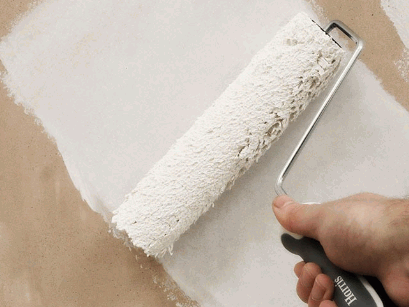
Clean And Repair The Surface
Before painting on plaster walls, it is essential to clean the surface thoroughly to remove any dirt, dust, or old paint that may affect the paint adhesion. Repairing any cracks or imperfections ensures a smooth and flawless finish once the painting is complete.
- One crucial step is to start by dusting the walls using a soft bristle brush or vacuum cleaner to remove loose debris.
- Next, mix a solution of warm water and mild detergent to wash the walls, then rinse with clean water and allow the surface to dry completely.
Repairing any cracks involves using a plaster patching compound to fill in the gaps, smoothing it out with a putty knife, and sanding it once dry. This process will create a seamless surface for the new paint to adhere to.
Use A Primer
Applying an undercoat before painting on plaster walls is crucial to promote adhesion, seal the surface, and enhance the coverage and durability of the paint. Selecting the right undercoat for the specific type of plaster ensures a successful paint application.
Undercoats act as the foundation for your paint job, creating a smooth and uniform surface for the paint to adhere to. For new plaster, it’s essential to use a sealer undercoat to prevent the absorption of moisture and ensure proper bonding. On the other hand, when working with old plaster, a bonding undercoat helps in concealing imperfections and creating a stable base.
One popular technique is using a mist coat undercoat, which is a diluted layer of emulsion that seals porous surfaces and promotes better adhesion of the paint. This method is particularly effective for fresh plaster, as it helps in regulating the absorbency of the wall.
In terms of sealing the plaster, applying PVA as an undercoat is a common practice. PVA seals the wall, reducing the porosity and helping the paint to stick better. To apply PVA, dilute it with water in a 4:1 ratio, apply it evenly using a brush or roller, and allow it to dry completely before proceeding with the paint job.
Apply Multiple Coats
Achieving a uniform and flawless finish on plaster walls often requires applying multiple coats of paint. Starting with a mist coat for better adhesion, followed by subsequent coats and a topcoat, ensures an even finish without any patchy areas.
Applying multiple coats of paint is crucial as it allows for better coverage, increased durability, and a more professional result.
The mist coat, which is the initial thin layer of paint, penetrates the plaster surface, providing a good base for the subsequent coats to adhere to.
To achieve a smooth finish, it’s important to evenly spread each coat, avoiding drips and drips.
Checking for any imperfections between coats and ensuring proper drying times before applying the next layer also contributes to a seamless paint job.
Addressing common issues such as patchy finishes requires attention to detail and possibly light sanding or additional touch-ups for a cohesive look.
Use The Right Tools
Selecting the appropriate tools for painting on plaster walls can significantly impact the outcome of the project. High-quality brushes, rollers, and paint applicators ensure smooth application, prevent peeling paint, and contribute to achieving the best paint finish.
In terms of brushes, opting for those with fine bristles can result in more precise strokes and better coverage. Using high-quality rollers can help in achieving a uniform application of paint, leaving no streaks or lines behind. Pairing these tools with a suitable primer can further enhance the adhesion of the paint to the plaster surface, reducing the chances of peeling or flaking over time.



